Why you can trust Tom's Hardware
Comparison
We pit the Plugable Thunderbolt 3 NVMe against two top TB3 competitors, the Samsung X5 and G-Technology G-Drive mobile Pro. To compare the performance you'll get from a USB 10Gbps interface and NVMe, we threw in the Lexar SL100 Pro. As SATA based competitors, we also threw in the SanDisk Extreme and a LaCie Mobile Drive HDD.
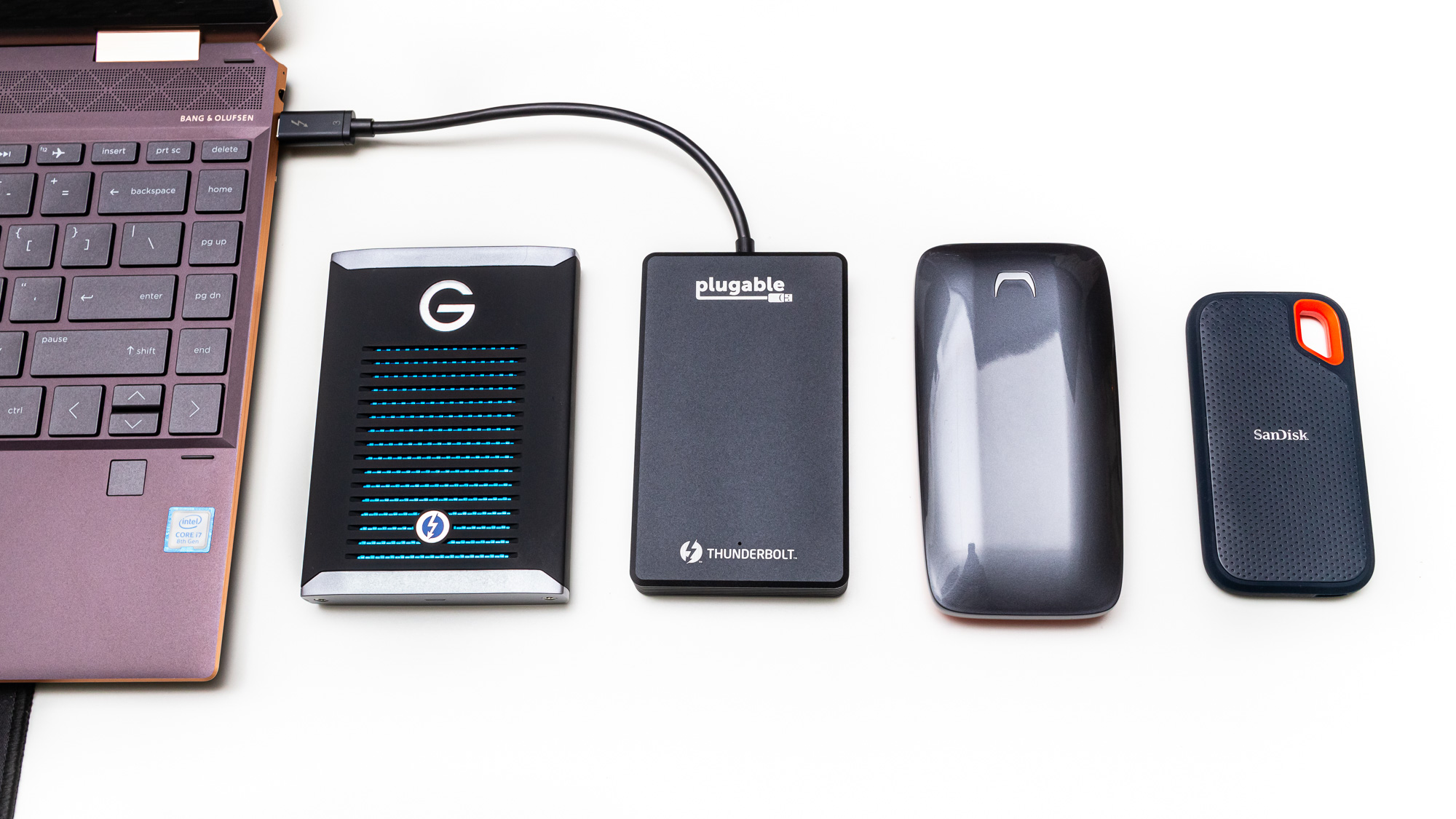
Transfer Rates - DiskBench
DiskBench is a storage benchmarking tool that allows us to test the transfer or copy performance of a storage device with real data. We test external drives with three file transfers that consist of 25GB of photos (10GB of iPhone jpgs and 15GB of RAW photos from a Canon 6D), 50GB of movies, and 25GB of documents. First, we transfer each folder from a 1TB NVMe SSD to the external device; then we follow up by reading a 3.7GB 7-zip file and a 15GB movie back from the device.
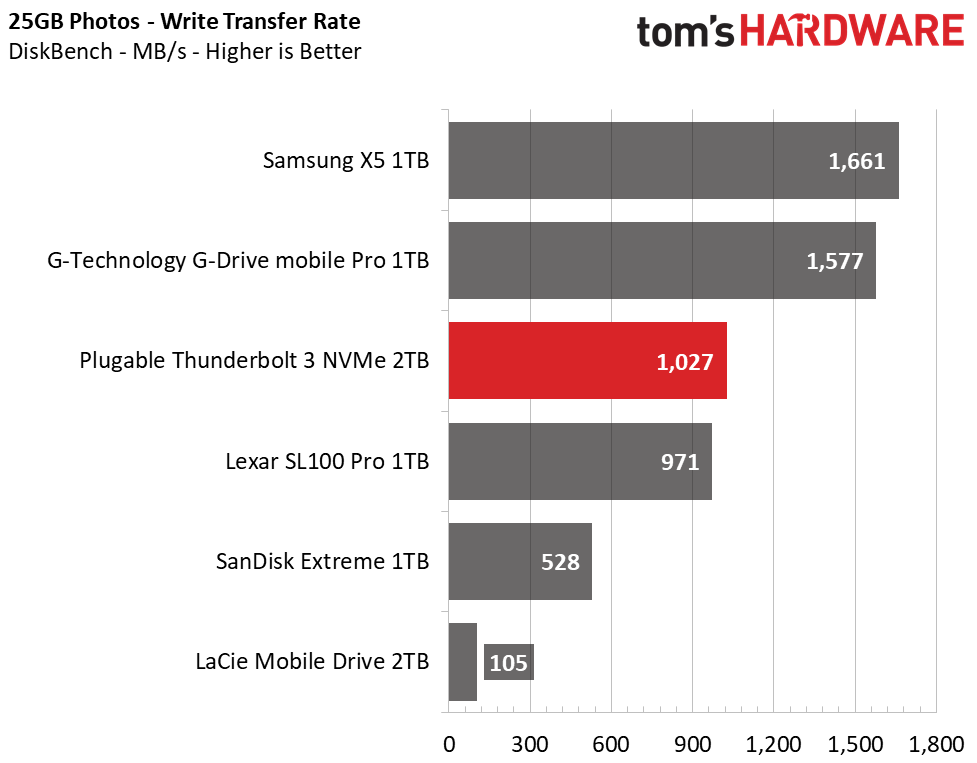
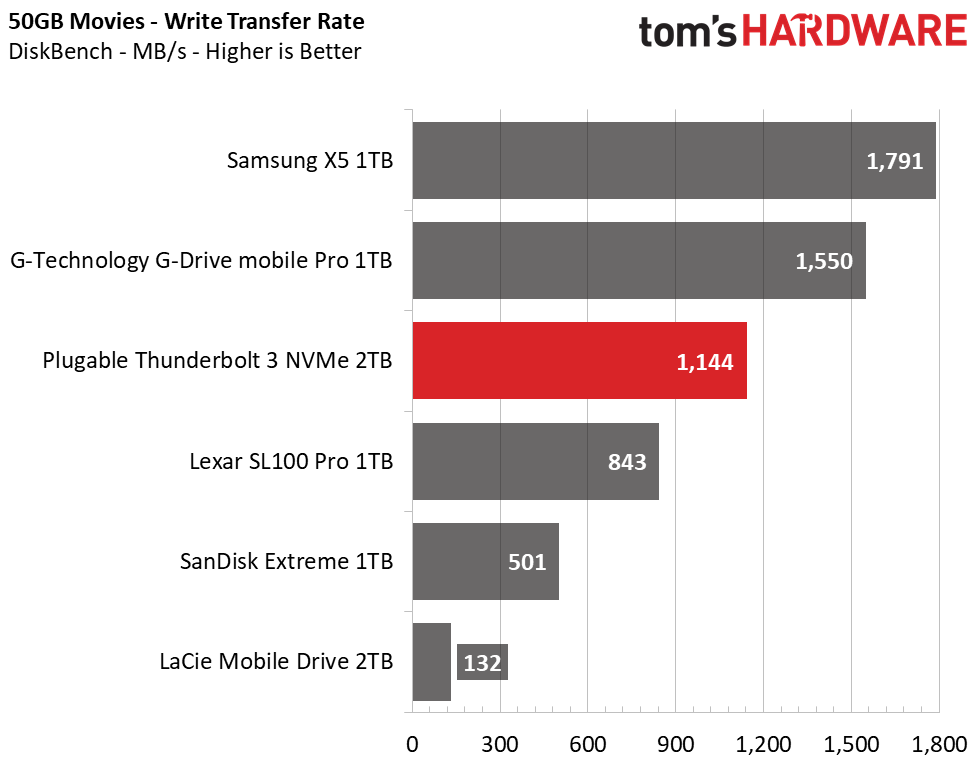


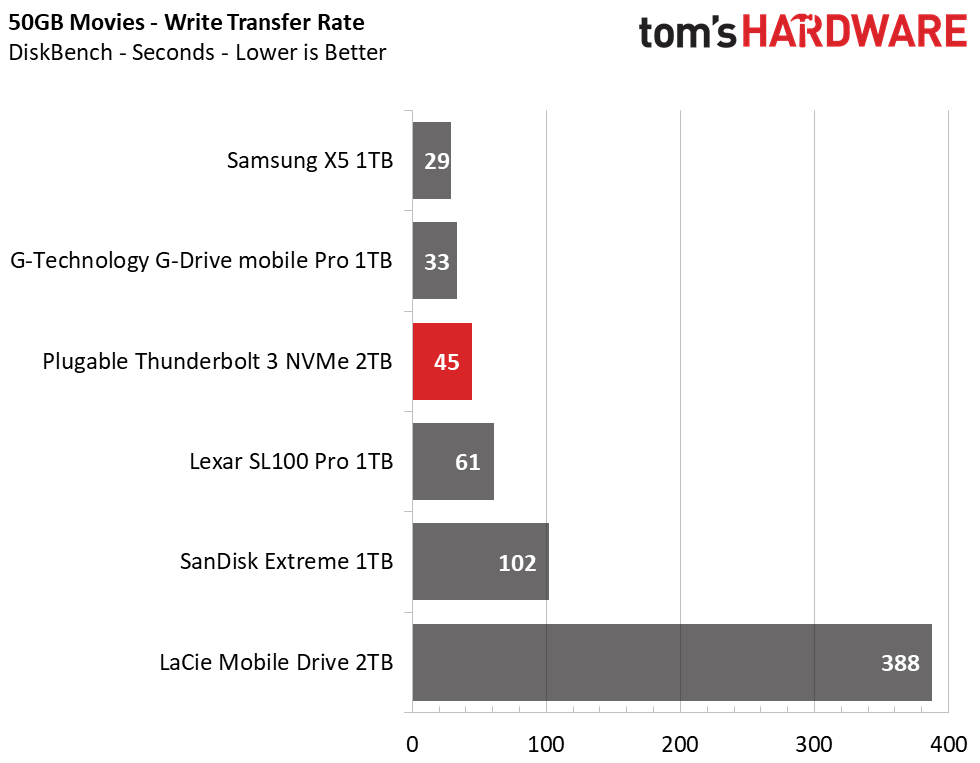
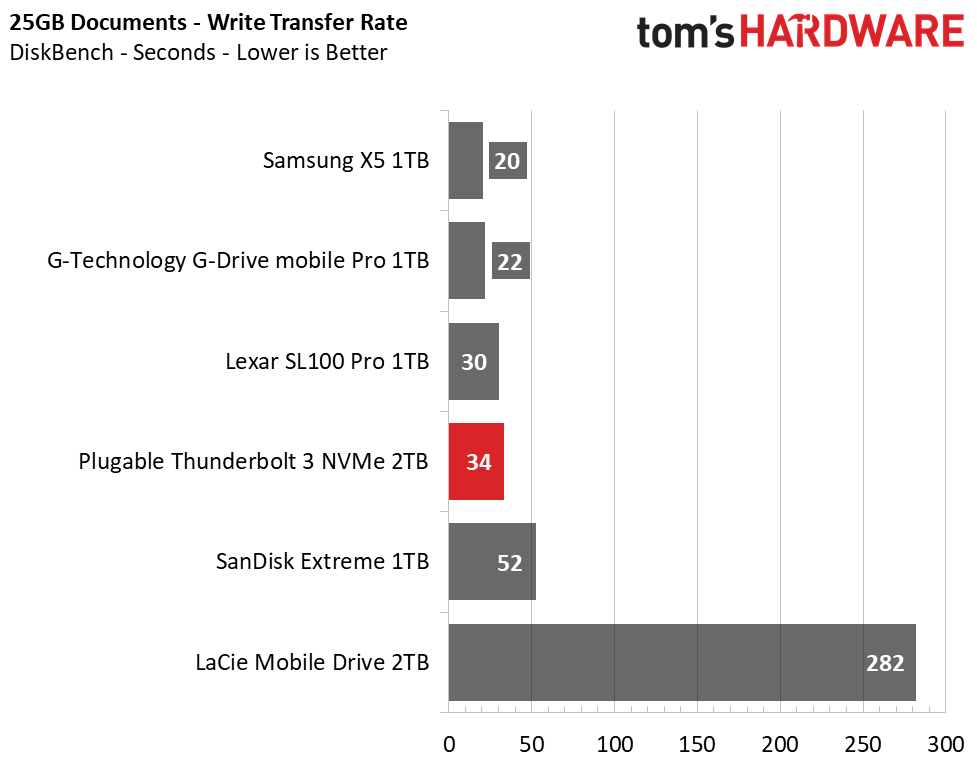

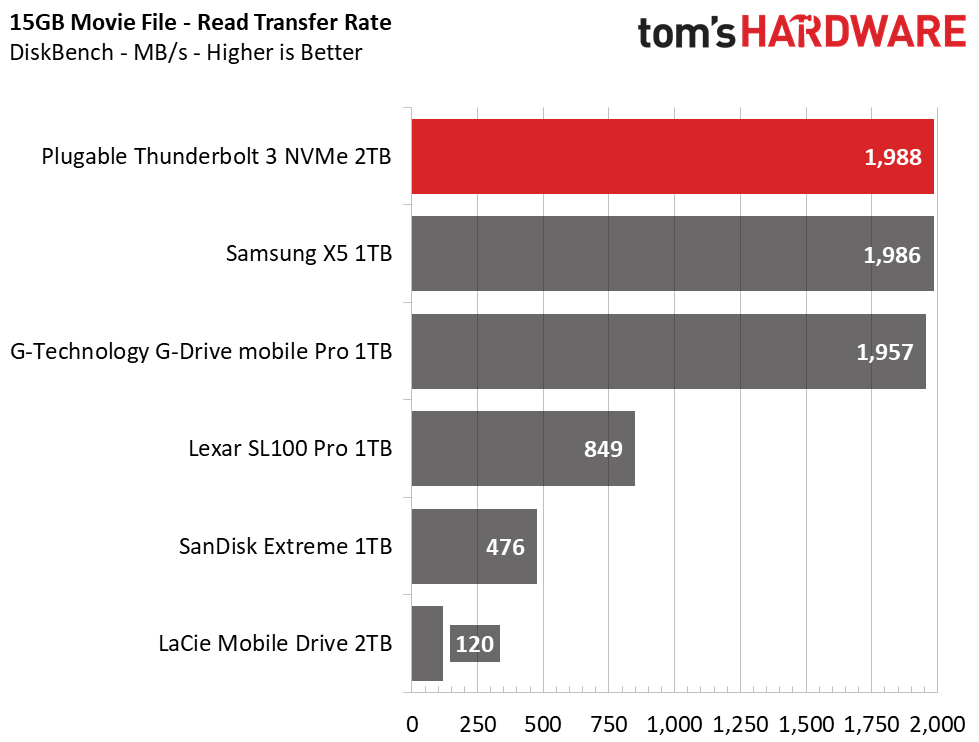


Over the Thunderbolt 3 interface, the Plugable SSD was able to write data at fairly fast rates. But the costlier options performed a bit better still. When transferring photos, the Samsung and G-Technology SSDs were writing on average 600 MBps faster and 400-800MBps faster when transferring movie files. During file reads, the Plugable drive delivers performance that is nearly on par with its higher-cost competitors, though.
Trace Testing - PCMark 8 Storage Test 2.0
PCMark 8 is a trace-based benchmark that uses Microsoft Office, Adobe Creative Suite, World of Warcraft, and Battlefield 3 to measure the performance of storage devices in real-world scenarios.
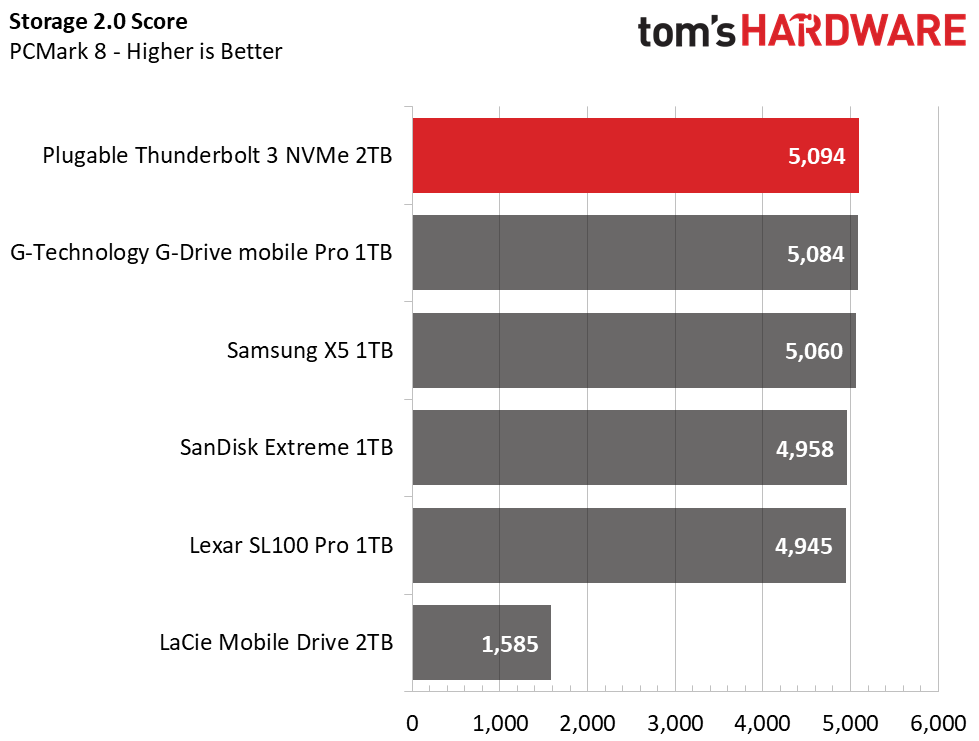

In PCMark 8 the Plugable TB3 NVMe SSD takes the crown. Scoring first place with the highest bandwidth yet, it excels at various consumer-based workloads and leaves your standard external HDD far behind.
Synthetics - ATTO
ATTO is a simple and free application that SSD vendors commonly use to assign sequential performance specifications to their products. It also gives us insight into how the device handles different file sizes.
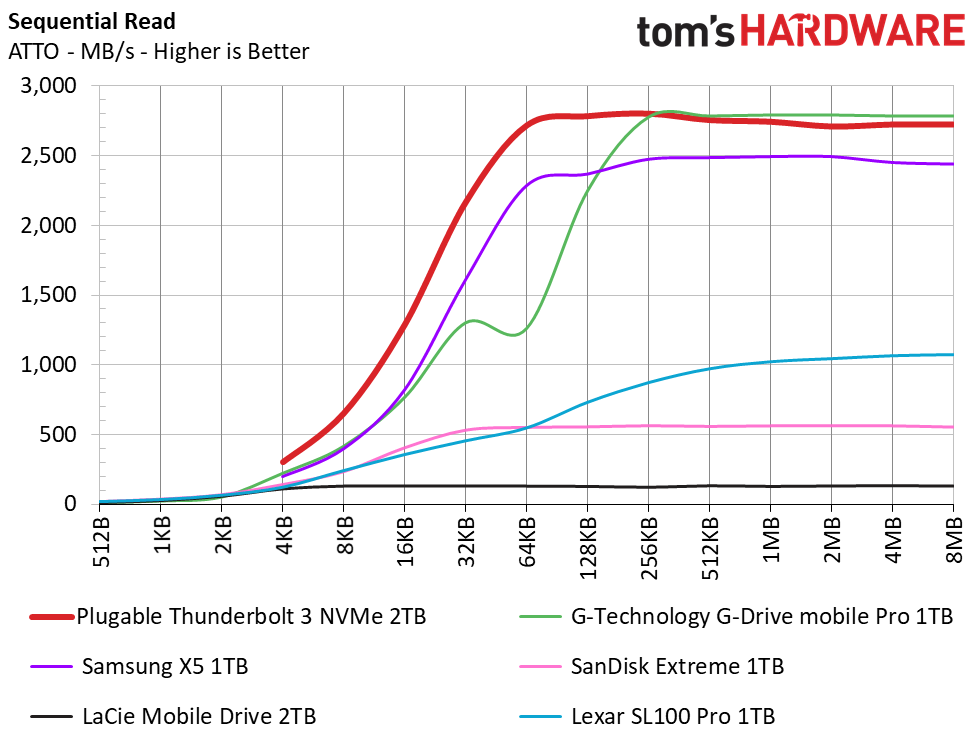
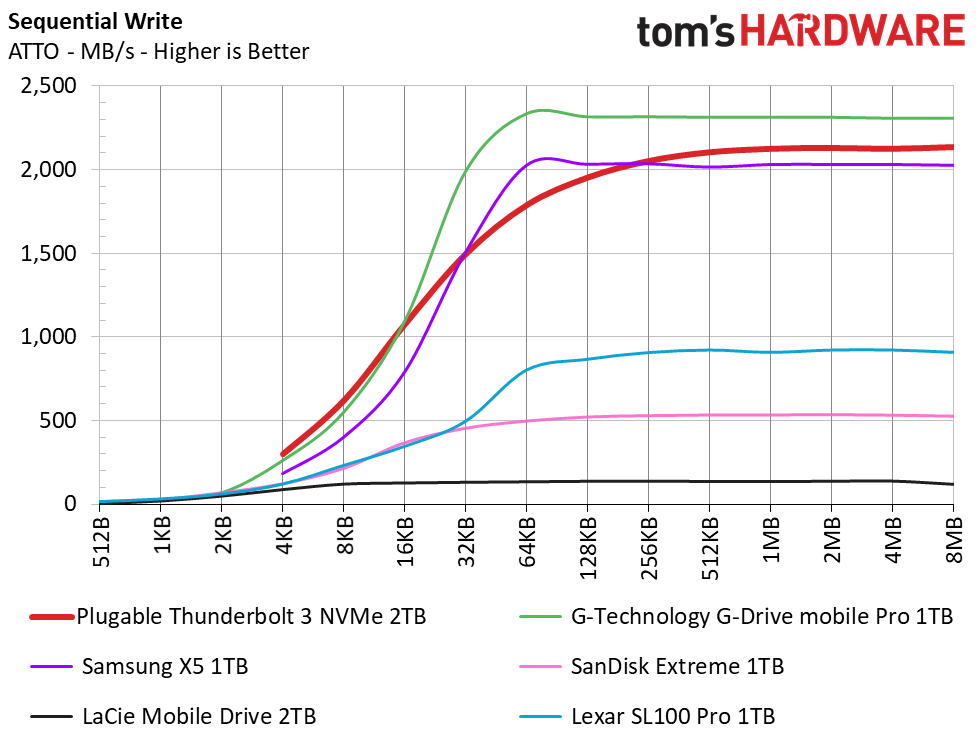
Plugable’s TB3 NVMe SSD hits 2.8/2.3 GBps read/write speeds and shows quite an impressive performance ramp-up compared to the other devices.
Get Tom's Hardware's best news and in-depth reviews, straight to your inbox.
Synthetics - iometer
iometer is an advanced and highly configurable storage benchmarking tool that vendors often use to measure the performance of their devices.
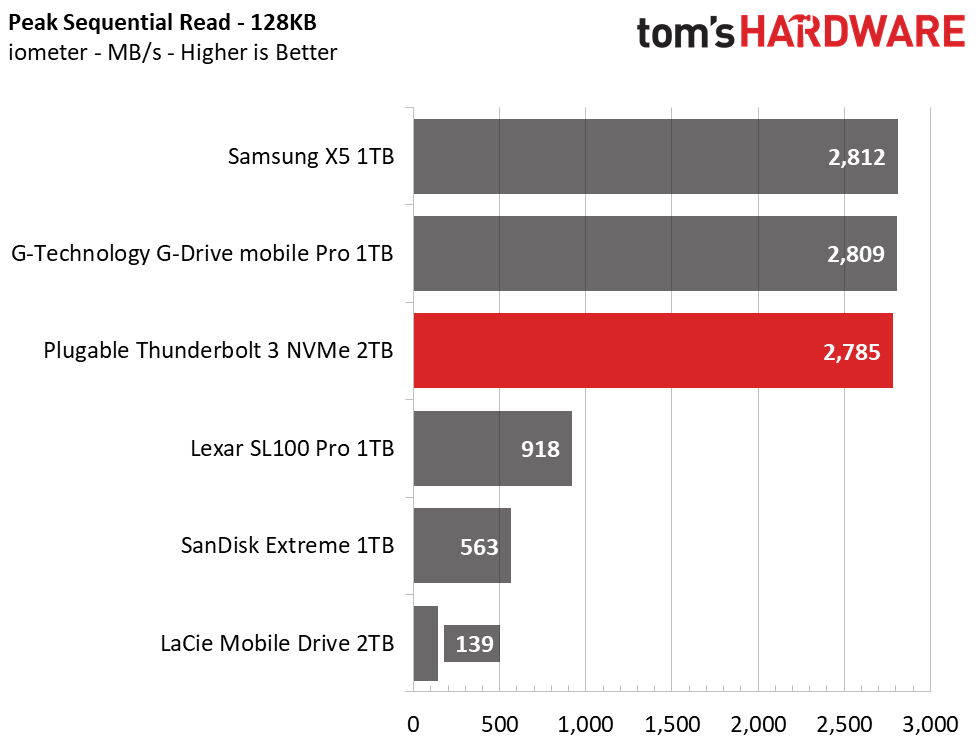
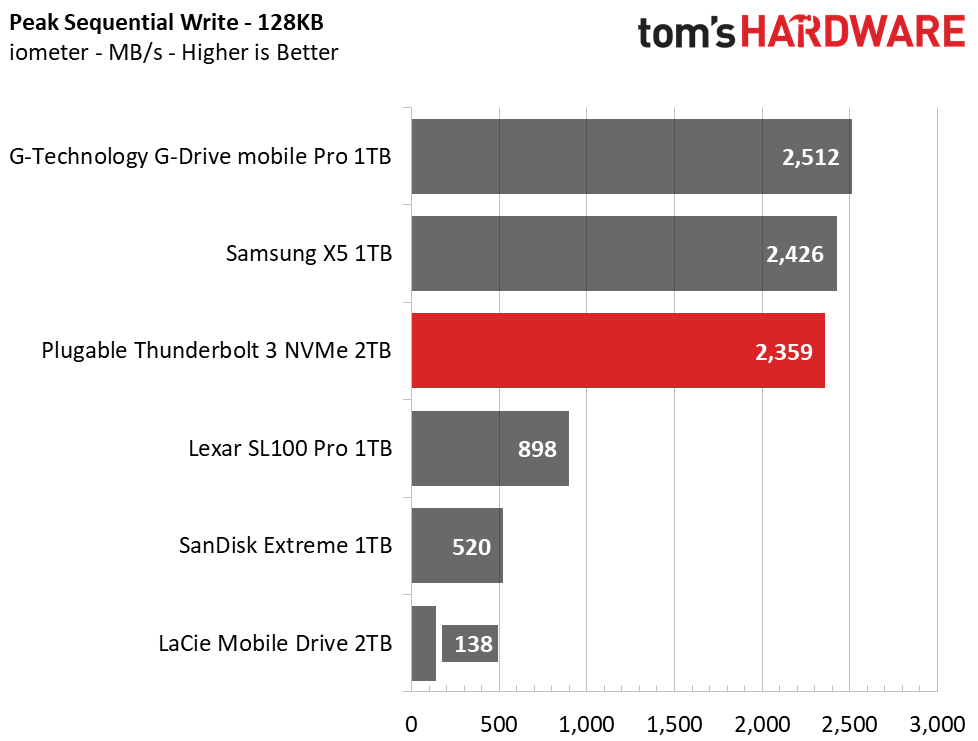
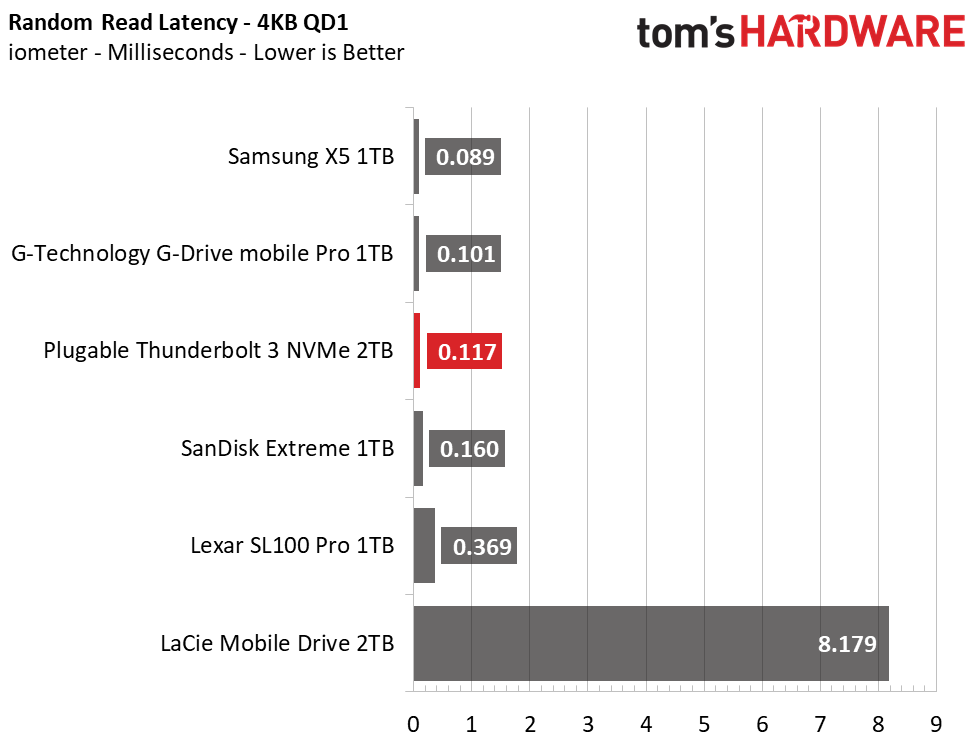
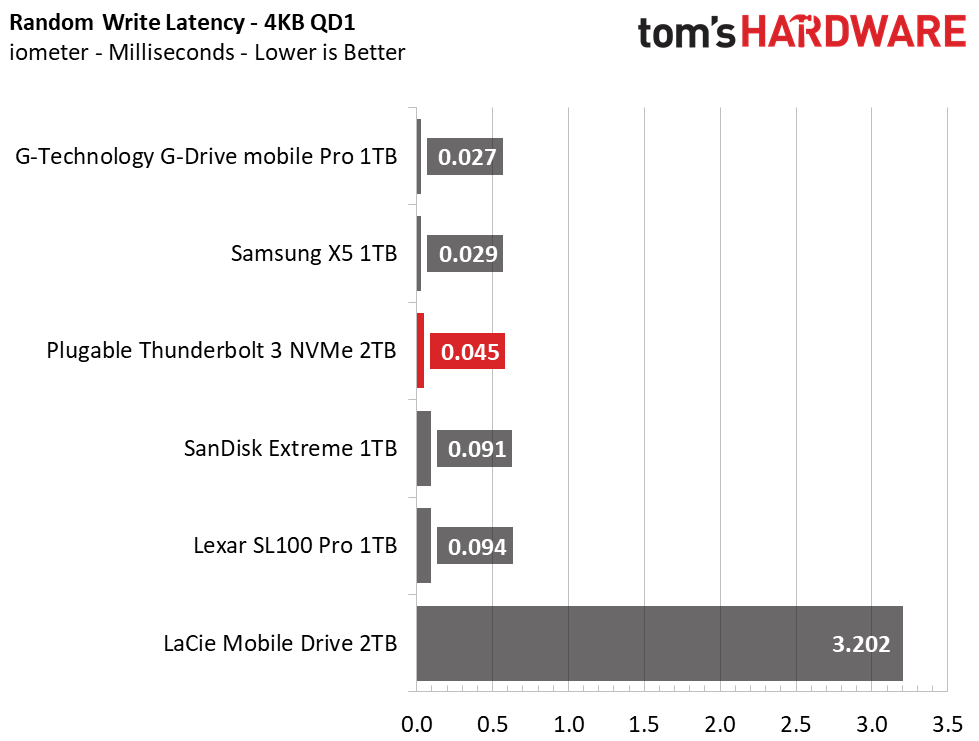
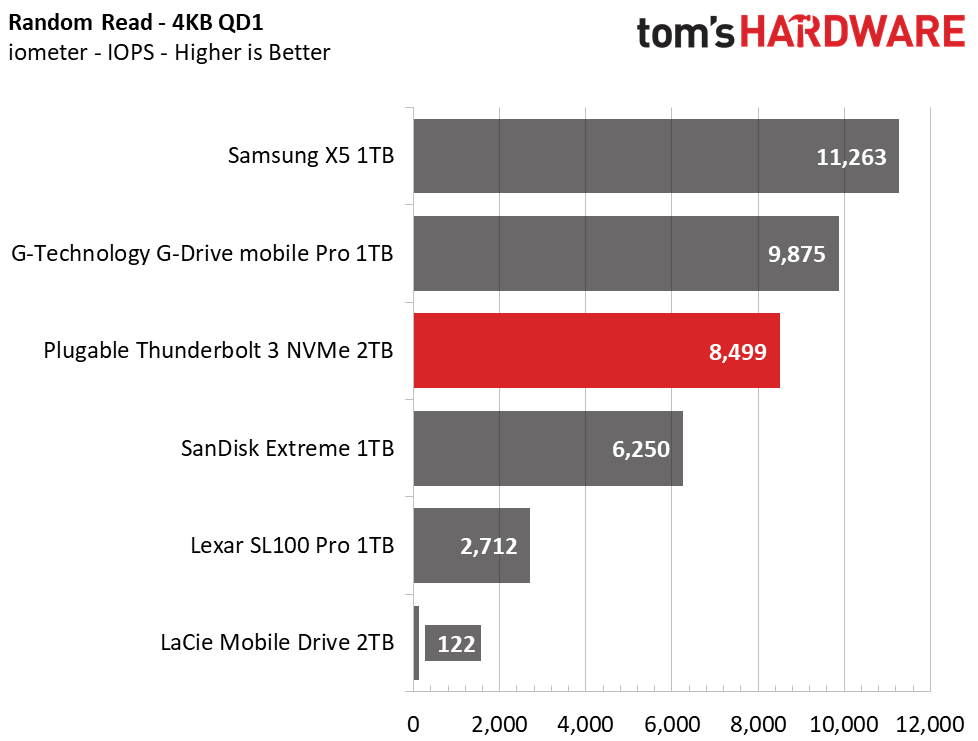



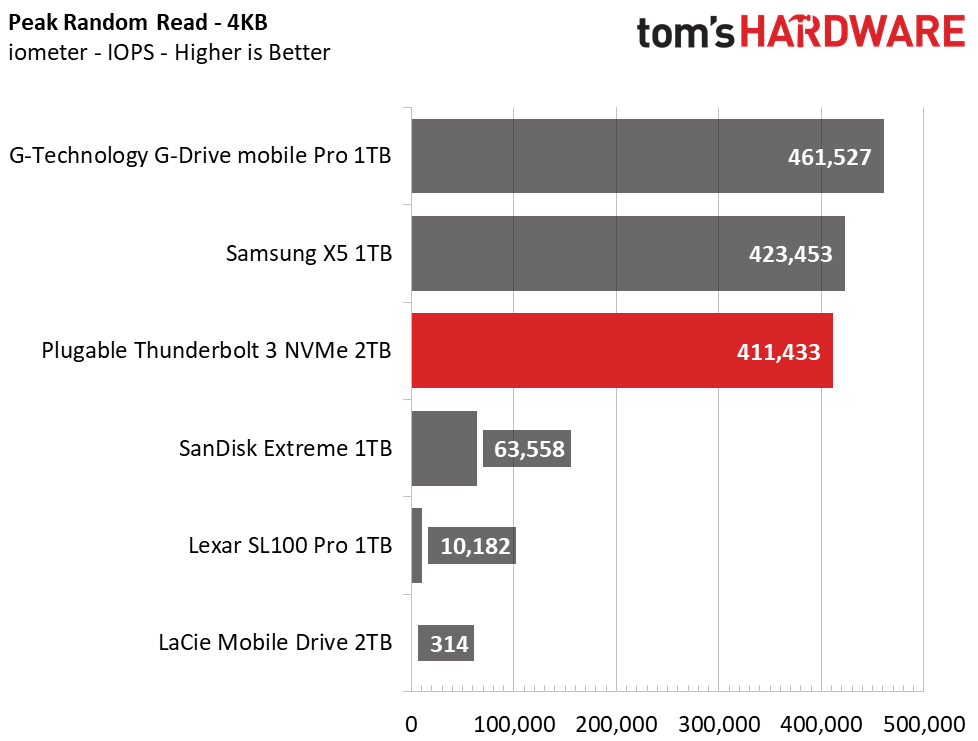
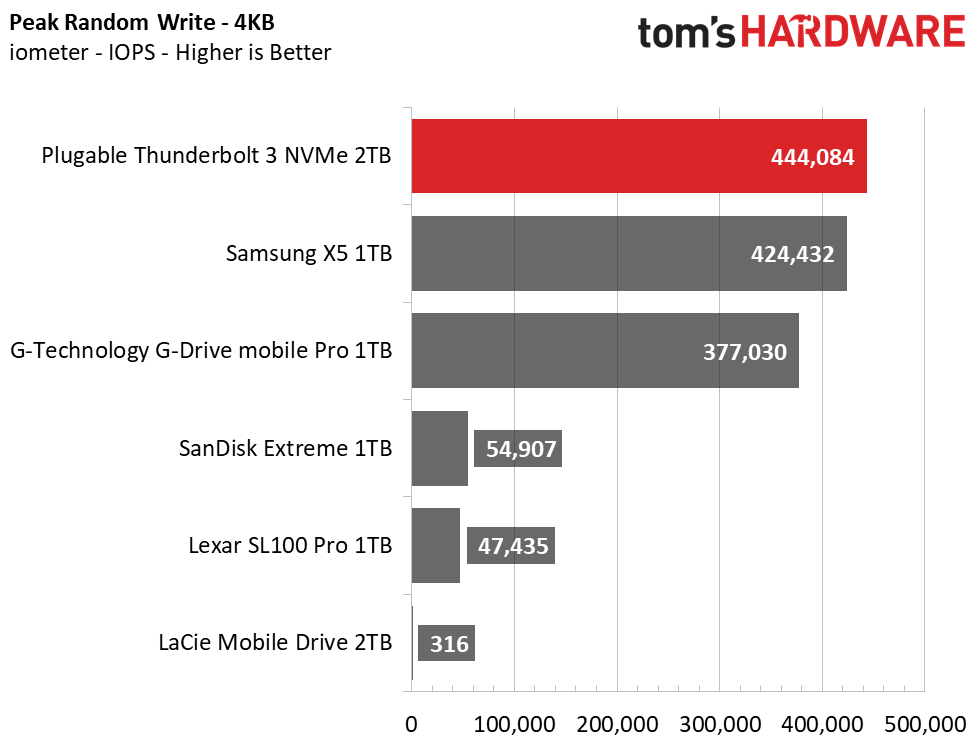
Peak sequential read and write speeds report at 2,785 MBps and 2,359 MBps, respectively. While that's not as high as the Samsung and G-Technology SSDs, Plugable’s TB3 NVMe SSD delivers responsive random performance, too.
Write Saturation and Temperature
Write speed and temperature are two important and inter-related metrics for external devices. We threw in this one last test to measure the performance of the drive over a 15-minute window, writing to the full span of the drive. When possible, we also log the temperature of the drive via the S.M.A.R.T. data to see when (or if) thermal throttling kicks in and how it impacts performance. This test also reveals if the drive has a pseudo-SLC cache, which is a small portion of faster-programmed flash that absorbs incoming write workloads. Bear in mind that results will vary based on the workload and ambient air temperature.
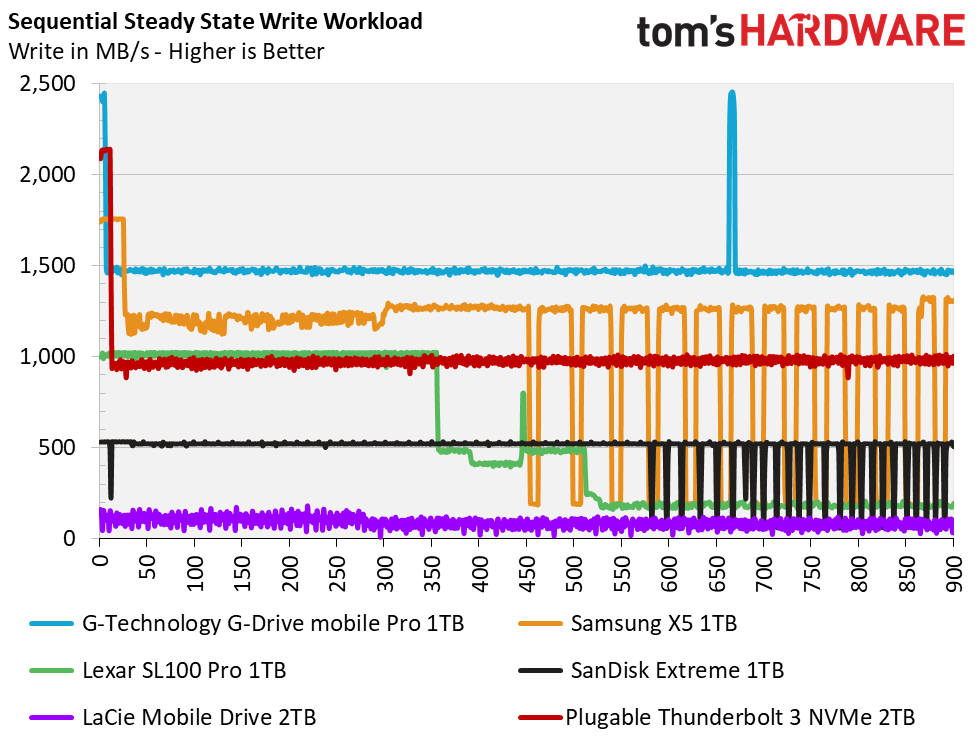


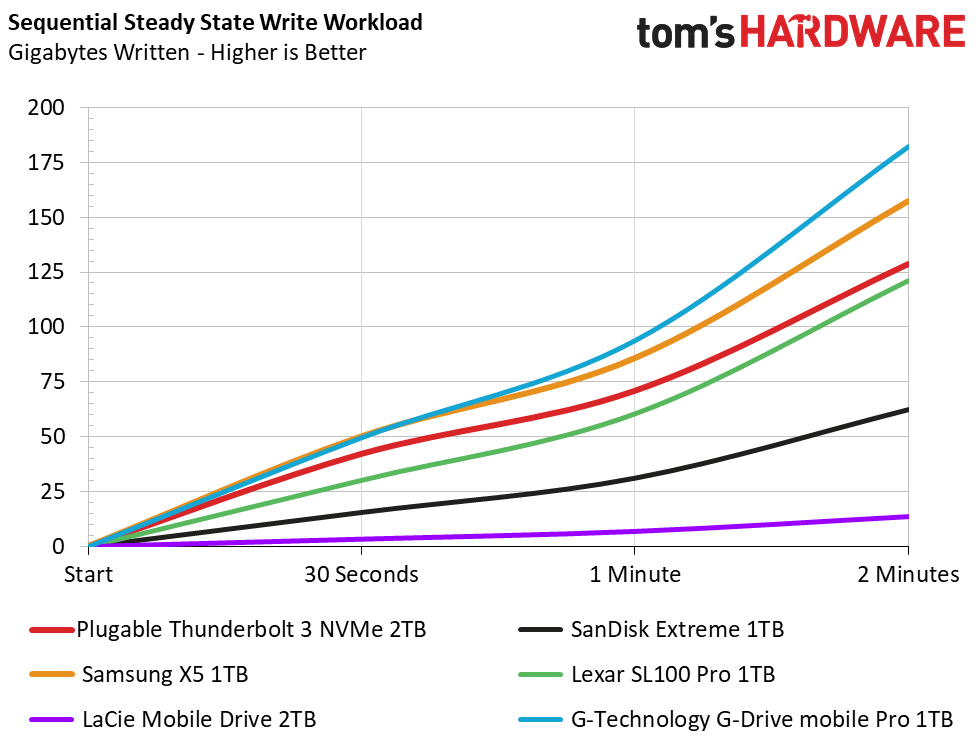
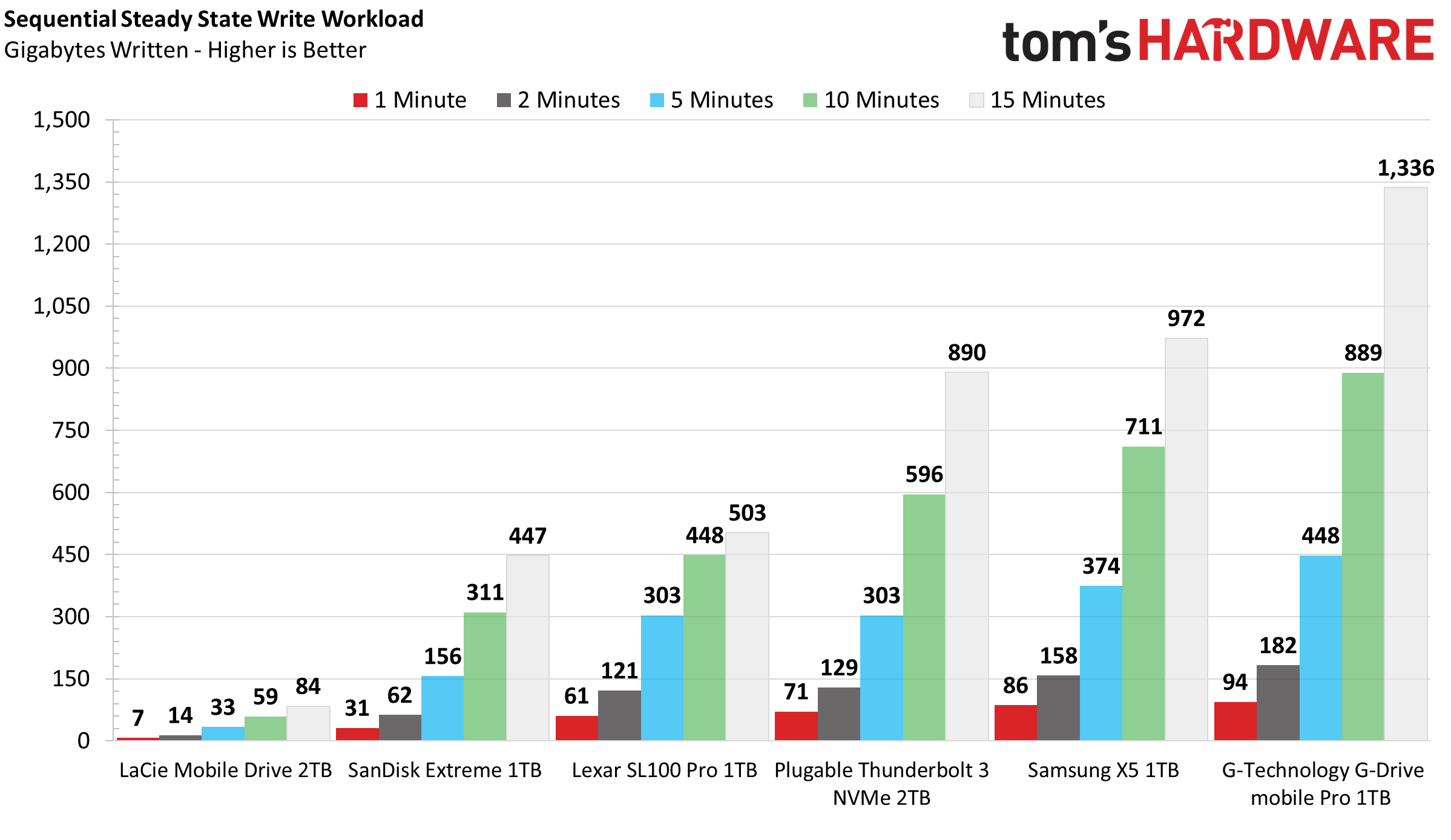
Like your standard Phison E12 based SSDs, Plugable’s TB3 NVMe SSD has a small SLC write cache. It measures 24GB in capacity and we were able to fill it at a rate of ~2.2 GBps. After it was exhausted, the direct-to-TLC write speed was 975 MBps. This enables the drive to outperform the Lexar SL100 Pro after 5 minutes of write time at full speed and keep up with the Samsung X5.
Our controller was reporting temperature readings in the 58-60 Celsius range at most, and the exterior measured 45C (113 Fahrenheit) at the hottest point on the bottom where the controller and NAND touch it.
MORE: Best SSDs
MORE: How We Test HDDs And SSDs
MORE: Best External Hard Drives and SSDs

Sean is a Contributing Editor at Tom’s Hardware US, covering storage hardware.
-
velocityg4 Interesting but it's still cheaper to get an NVMe Thunderbolt 3 enclosure. Then install your own NVMe SSD. Especially so in the 1TB and 2TB brackets. It would be interesting to see how well those compare. Plus if they can keep an SSD within safe temps.Reply